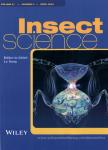Tree colonization by the Asian longhorn beetle, Anoplophora glabripennis (Coleoptera: Cerambycidae): effect of habitat and tree suitability
Tree colonization by the Asian longhorn beetle, Anoplophora glabripennis (Coleoptera: Cerambycidae): effect of habitat and tree suitability作者机构:Department of Agronomy Food Natural resources Animals and Environment (DAFNAE) University of Padova Legnaro (PD) Italy
出 版 物:《Insect Science》 (昆虫科学(英文版))
年 卷 期:2016年第23卷第2期
页 面:288-296页
核心收录:
学科分类:0710[理学-生物学] 0830[工学-环境科学与工程(可授工学、理学、农学学位)] 07[理学] 09[农学] 0904[农学-植物保护] 0901[农学-作物学] 090402[农学-农业昆虫与害虫防治] 071002[理学-动物学] 0713[理学-生态学]
基 金:supported by the PRATIQUE project funded by the European Community's Seventh Framework Programme the Italian national project by the University project (ex-60%)
主 题:Asian longhorn beetle performance breeding feeding forest nonhost urban
摘 要:Tree colonization and feeding activity of the invasive wood-borer Asian longhorn beetle (Anoplophora glabripennis), an Asian pest introduced into North America and Europe, was studied in a newly invaded area in Italy. The hypothesis be- ing tested was that the reproductive success of the insect depend on habitat type and tree suitability. Adult beetles were caged on branches of host and nonhost species, in both urban and forest habitats. Two months later, number and size of feeding patches on plant tissues, eggs laid, and surviving larvae were assessed. Bark concentration of C and N was also measured from the same trees. Results indicated that the mean area of plant tissues consumed by adult feeding was significantly larger on trees growing in forest than in urban habitat, although within the same habitat there were no differences between susceptible and nonsusceptible trees. ALB tree colonization, in terms of number of eggs laid and young larvae survival, was not affected by habitat while it was higher on susceptible trees. Although trees growing in forests had a lower nitrogen concentration, they allowed colo- nization rates similar to those of trees growing in the urban habitat. Hence, the amount of carbon and nitrogen did not fully explain tree suitability or habitat selection. We suggest compensatory feeding as a potential mechanism that might explain this peculiar situation, as supported by a more intensive feeding activity recorded on trees in the forest. Suitability of different trees may be due to other factors, such as secondary chemical compounds.



